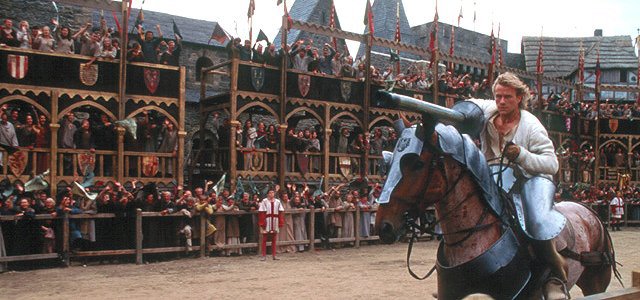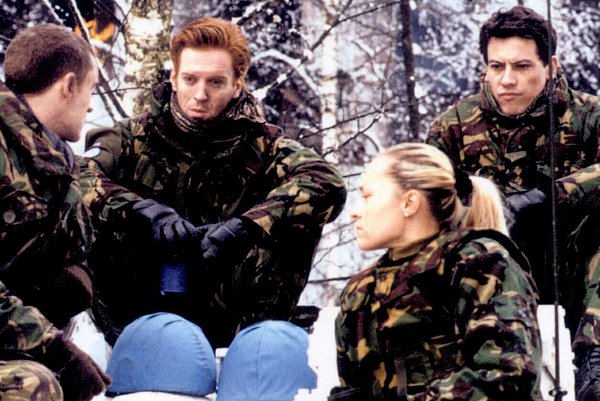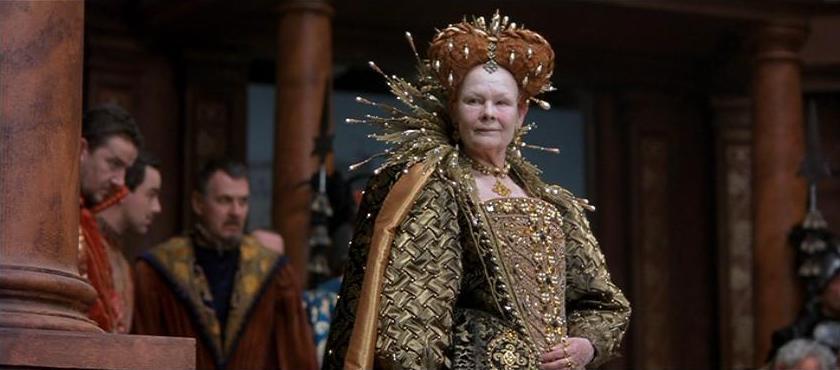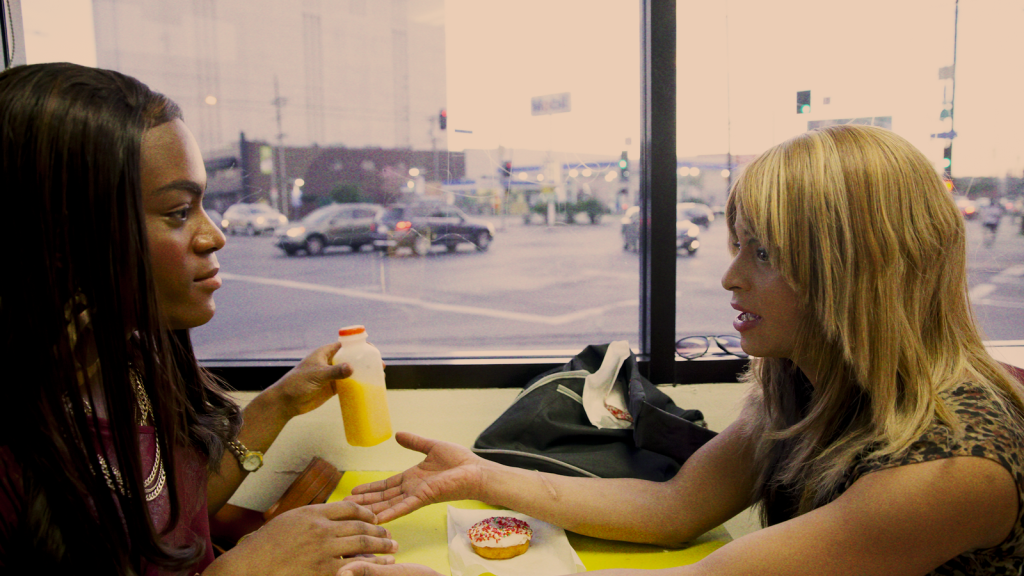The Oscar-nominated and BAFTA-winning DoP discusses some of the most important lessons he’s learned over the course of his career.

“Shooting an Oscar-Winner with Richard Greatrex & Remi Adefarasin” will be held at Cinema Jam HQ at Collective Temperance Hospital on the 30th and 31st July, from 10:00 to 18:00. Tickets are £249 for two full days of instruction. Readers of the The Spread can use the promotional code “SpreadDoP”, for a 10% discount. Click here for more info.
I recently spoke with Richard to learn more about his career, and hear some of his best advice for up-and-coming cinematographers.
How did you first get into cinematography?
I started off when I left school early as an electrician, and after 8 years of that I found higher education. When I was at university in the early 1970s, I made friends with an American fellow who had a video camera and didn’t know how to use it. I was fairly good technically, so I filmed stuff for him in South Wales amongst the mining community.
We did that for a few years, and eventually I got fed up with the technology and thought “I need to learn about film.” So I applied for the National Film and Television School, and got in. After three years of that, I decided that cinematography was the game, and was arrogant enough along with my colleagues to say that I was a DP. That was in 1981. It was a very good time to leave college, as the union was still strong then. Thank goodness, because it’s not anymore.
One of the many advantages [the NFTS] had was you got a union ticket at the end, so you could get work. It was also especially important that you got the union ticket because films were very buoyant then. Music promos has just been invented, British commercials were really beginning to fly, the independent film scene was very buoyant, and Channel 4 and S4C, the Welsh-language TV channel, had also just started. I practiced all those different arts from the moment I left film school, and we kind of learned on the job.
Who were some of your major stylistic influences?
Before I went to film school, I knew nothing about filmmaking. I didn’t really know it existed, and was not particularly interested in it. The whole idea became attractive because it allowed you to tell stories.
Regarding camera style, it’s one of my things that a decent cinematographer never has a style, because it seems to be that if a cinematographer has a style, that style must always coincide with the needs of the story. It’s the story and the script that should have a style, not the cinematographer, so I’ve never consciously gone after creating a style. In fact, I think that cameramen that put their style in a bag and take it with them are making a mistake.
My favorite camerapeople nowadays are those people who, when you watch a film, you can’t tell it was shot by so-and-so, because they’ve subsumed their personal predilections in need of the story. I really don’t like it when famous cameramen move from film to film with their style and start to win all these plaudits.

Some of Richard’s work on “A Knight’s Tale”
Do you have any camerapeople today that you’re a particularly big fan of?
I am a fan of Roger Deakins, who by coincidence went to the same school as me a few years before me. One of the reasons I like his work is that, at the end of the film, like I’ve said, you can’t tell that Roger’s shot it. He doesn’t bring the Roger Deakins style, he brings whatever the needs of the story are to it.
So would you go into each film with a completely blank slate in terms of ideas?
Well, you’ve always got a pre-idea because you’re set in ways of working, but the trick is to use adaptability. You have to adapt your box of tricks to what the needs of the story are. It seems to be that that’s the most important thing a cinematographer can do: really know what the story needs and talk to lots of people who’re involved with the story, and try and understand the needs of the story, and then start to think about what style [you] can bring to that. But you can’t do it if you don’t have a box of tricks as well.
What are some of the most important tricks?
Lots of them. That’s the first thing - have lots of tricks so that you can really adapt them. Also, a cinematographer should have good eyes, but his ears should be just as good. You have to listen to what people are saying. One of the tricks is, if someone says “what about?” or “I think…” or “maybe, it should be,” start the brain going. Think, what can I bring to that?
And one of the things I really did learn over 30 years of being a cinematographer is that you won’t sit down opposite a director, a designer, or a scriptwriter, and say “o.k., tell me the style of the film.” You’ll learn it bit by bit by spending time with them, by going to the pub, by being on location, by going to see films.
It’s a very organic process, not a mechanical one, and one of the most essential elements of it is time. You can’t do it without spending time. That’s why, when I was employed, I would always request that I had a decent amount of pre-production time. If the production was very firm about it not being available, I would not take a film. If I really thought a script and director were worth it, I would work unpaid for many weeks beforehand, because you’re going to do a much better job at telling the story if you understand what the story is.
You’ve had a long and successful career - won a BAFTA, nominated for an Oscar. What was the defining moment for you?
One of the nicest things about being involved in filmmaking is when somebody likes a film that you make. It doesn’t always happen, so to make a film that was universally popular and seemed to tell a story really well to such an extent that it became really well known [was great]. And of yet I haven’t met anybody who didn’t enjoy watching Shakespeare in Love.
My other moment is when I was involved in a little film called Warriors, which was directed by Peter Kosminsky. It was completely opposite to Shakespeare in Love - about the war in Bosnia, shot in the style of a documentary - but I was very proud of it because it was a very powerful script, and I think the style of storytelling that we brought to it really did enhance it.

A scene from “Warriors”
What are some of the most important lessons you learned during your career?
What I learned more and more was make it simple. The moment you’ve got a set with lights everywhere and flags everywhere, you know you’ve got it wrong. You’ve got to be simple. Simplicity of lighting means that the actors in front of the camera have more freedom to move around. If you’ve got very specific key lights which restrict their movements, you’re not going to help them in their task of telling a story. I began to see that the simpler the lighting was, the better the story was.
How has cinematography changed since your career started?
In many ways it has [changed], but in many was it hasn’t. The ways it has changed are a direct result of technology. It’s possible for a greater range of people to get involved in filmmaking now because of digital technology, and because it’s completely computer-based. So it’s democratized filmmaking, which has also meant that the kinds of films made are much greater nowadays, and the kinds of possibilities for those trying to get into it have been opened up.
When I left film school, many people who’d left with me denied they’d ever been there, because it was seen as such a burden on their possible careers. The only way previous to that was to start as a trainee because your mum or dad worked in the film industry. Nowadays, anybody can do it because there are so many ways in. There aren’t so many ways of getting employed, but there are lots of ways of learning it. The technology’s meant that all kinds of visual possibilities have opened up as well.
What hasn’t changed is that you’re still trying to tell a story. The technology is just a way of telling that story, and recording what you put in front of the camera. And what you put in front of the camera nowadays won’t be any different in 30, 40, 50, 60 years. It’s still got to tell a story.
Speaking of technology, though - do you have an opinion on the film vs. digital debate?
I never shot digital professionally. I shoot digital now in my own little way, and have my own 5D Mark II for when people ask me to make things. But you know, I’m really not interested in a debate about film or digital, because frankly, cameras bore me. Cameras are only recording devices. It’s what you put in front of the camera and what you do with it as a cinematographer that’s important.
Of course now the technology’s changed and you can do all kinds of things that previously you couldn’t. That’s opened up all sorts of possibilities. But [cameras] shouldn’t be the leading factor in your work. If a little digital camera is all you can get, just use the bloody thing. Don’t wait until you have enough money for an Alexa - just shoot it. Tell the story. I use photoshop every day, and have done for the past 15 years. Digital is wonderful. It’s your friend. So was a film camera, because that’s what you had at the time. It’s just a tool. You wouldn’t go on and on about a hammer, would you?

Richard was nominated for an Oscar for his work on “Shakespeare in Love”
You’ve been retired from cinematography for a little while - what have you worked on since then?
I quit cinematography 6 years ago. I was doing very well, so I thought I was on a fairly good high, and they often say quit while you’re on the high. Working as a cinematographer is, I think, the best job in filmmaking, but there’s one disadvantage and that is that you’re always telling someone else’s story. You’re never telling your own. It’s always somebody else that came up with the idea, and that idea would come along with a certain kind of look, and a certain king of world view. I wanted to do that a little bit - tell my own stories.
So I retreated to my old love, which was still photography, and now I spend a lot of time telling stories with little stills projects that I’m involved in. I’ve got a long-term project at the moment that’s called Working Wales. I have always thought about what work means for people, and I was very, very fortunate to find a kind of work that I found satisfying, fulfilling, and rewarding. An awful lot of people don’t.
So I discovered across Wales that there were a number of people - men and women - who run their own tiny businesses, that stem not from the primary need to make money, but from real passion and interest. I found people who make surfboards, people who make bicycles, and people who make micro-generators for small-scale hydro schemes. I’ve been documenting some of these people and following the story of the making of one of these things, and talking to them about why they do what they do and the kinds of advantages and disadvantages and rewards [they get]. It’s going to be a book.
Do you have any favorite films of recent memory?
I like films that are about things, and adventurous films, films that aren’t afraid to try things out in story terms. I very much enjoyed The Big Short, because it broke nearly all the rules of dramatic film storytelling, and told a very tough story with a lot of humor. I thought that was bloody clever.

A film where I didn’t really love the story, but think that it shows off all kinds of possibilities, was a wonderful little film called Tangerine (above), which was shot on iPhones. What they could get with the technology in terms of storytelling and drama was just stunning. It transformed lots of the things that in the past would’ve hindered your storytelling.
There was a lot of that dialogue across tables, and normally you try and shoot that with two cameras, looking over the participants’ shoulders. With a regular big old camera, you were forced to be off the eye-line a lot, because one camera will see the other camera looking across, so the camera has to go wider. That means the eye-line, where one participant is looking at the other participant, is miles off the camera, which is less intimate and personal. The thing with two iPhones is you can butt them right up against each other and have very tight eye-lines. The intimacy of those scenes, especially because they were improvised, was stunning. And that can only be done with new technology, which really aids storytelling to my mind.
Follow Richard’s work at richardgreatrex.co.uk.


